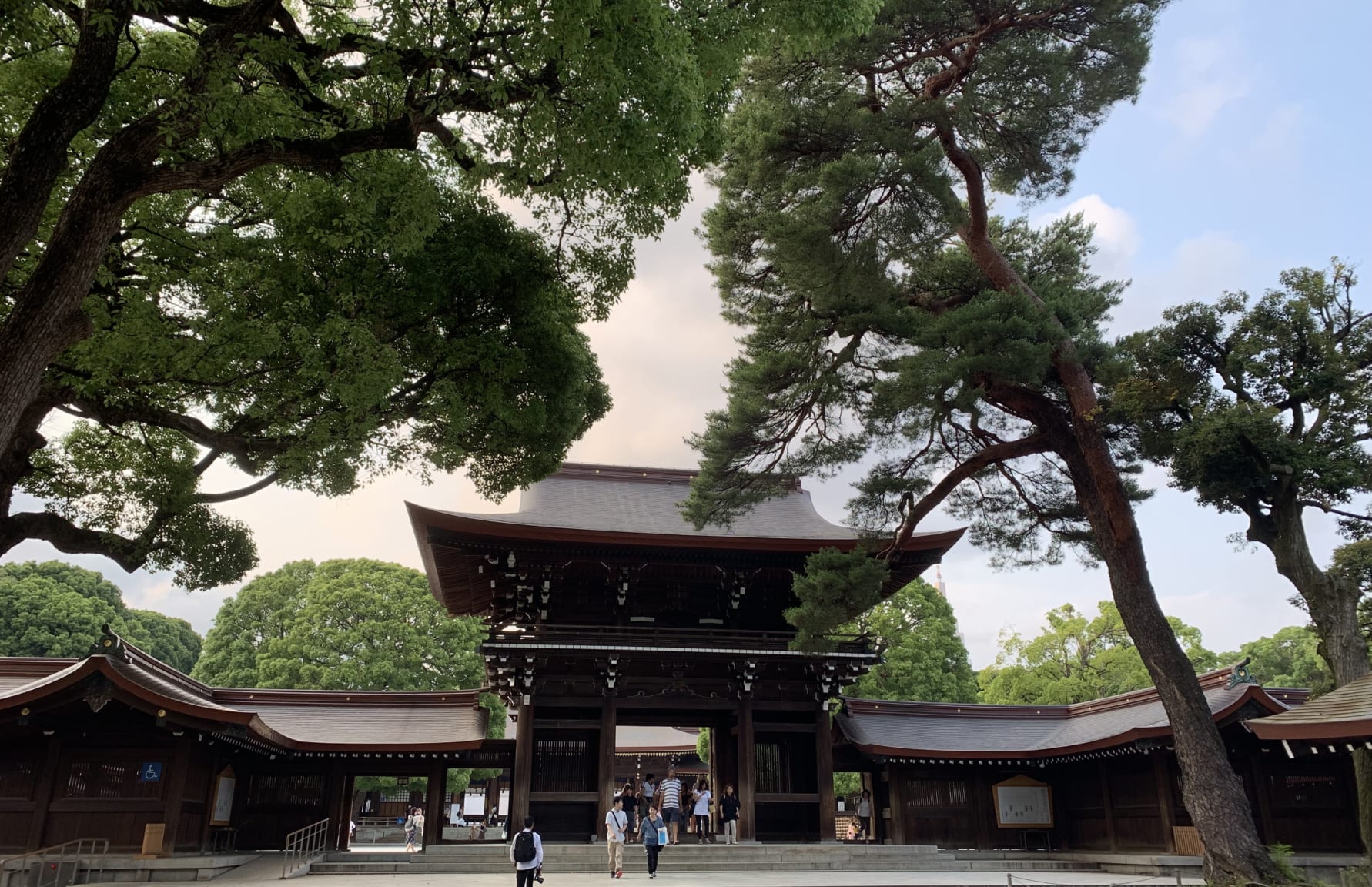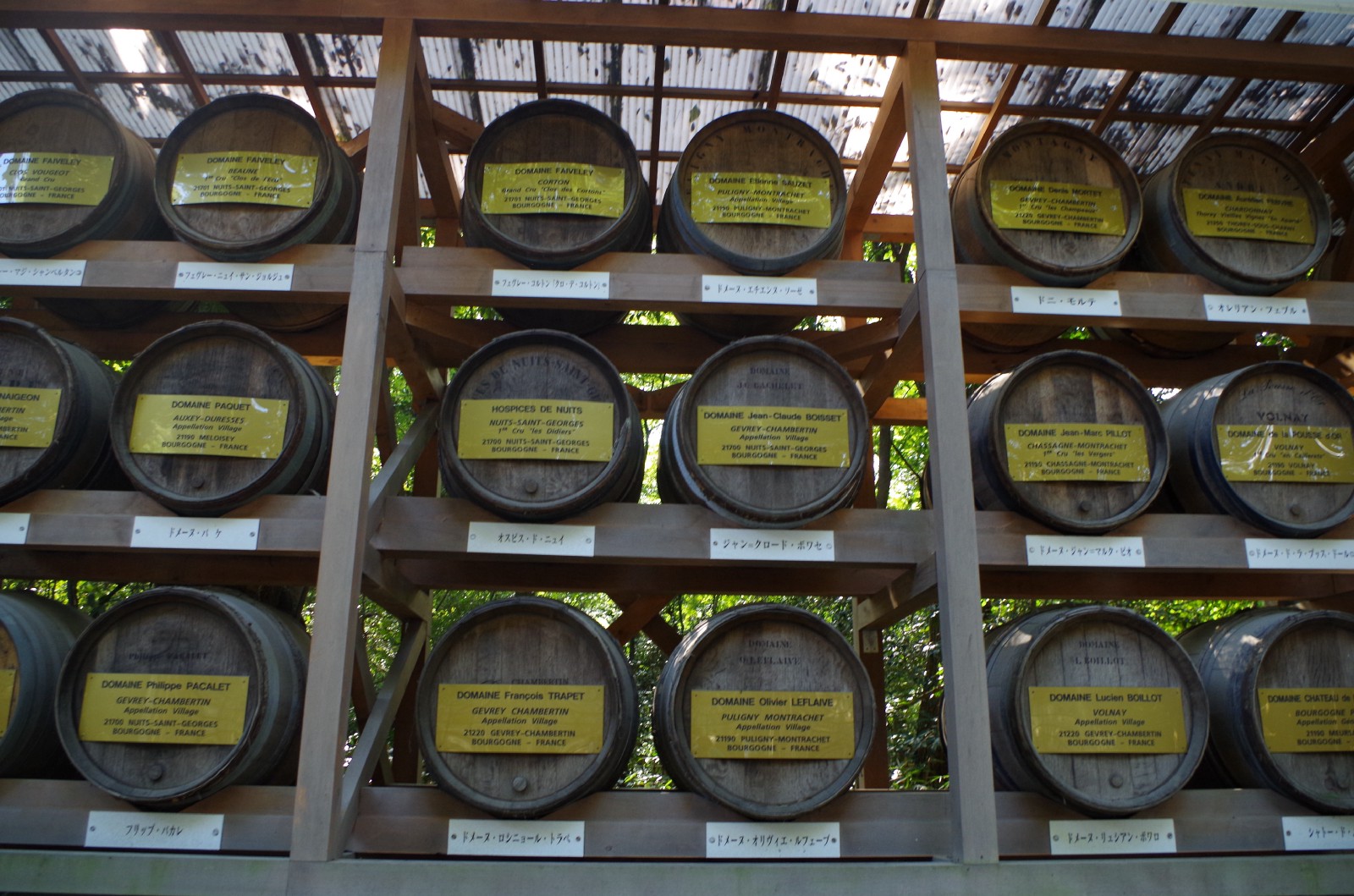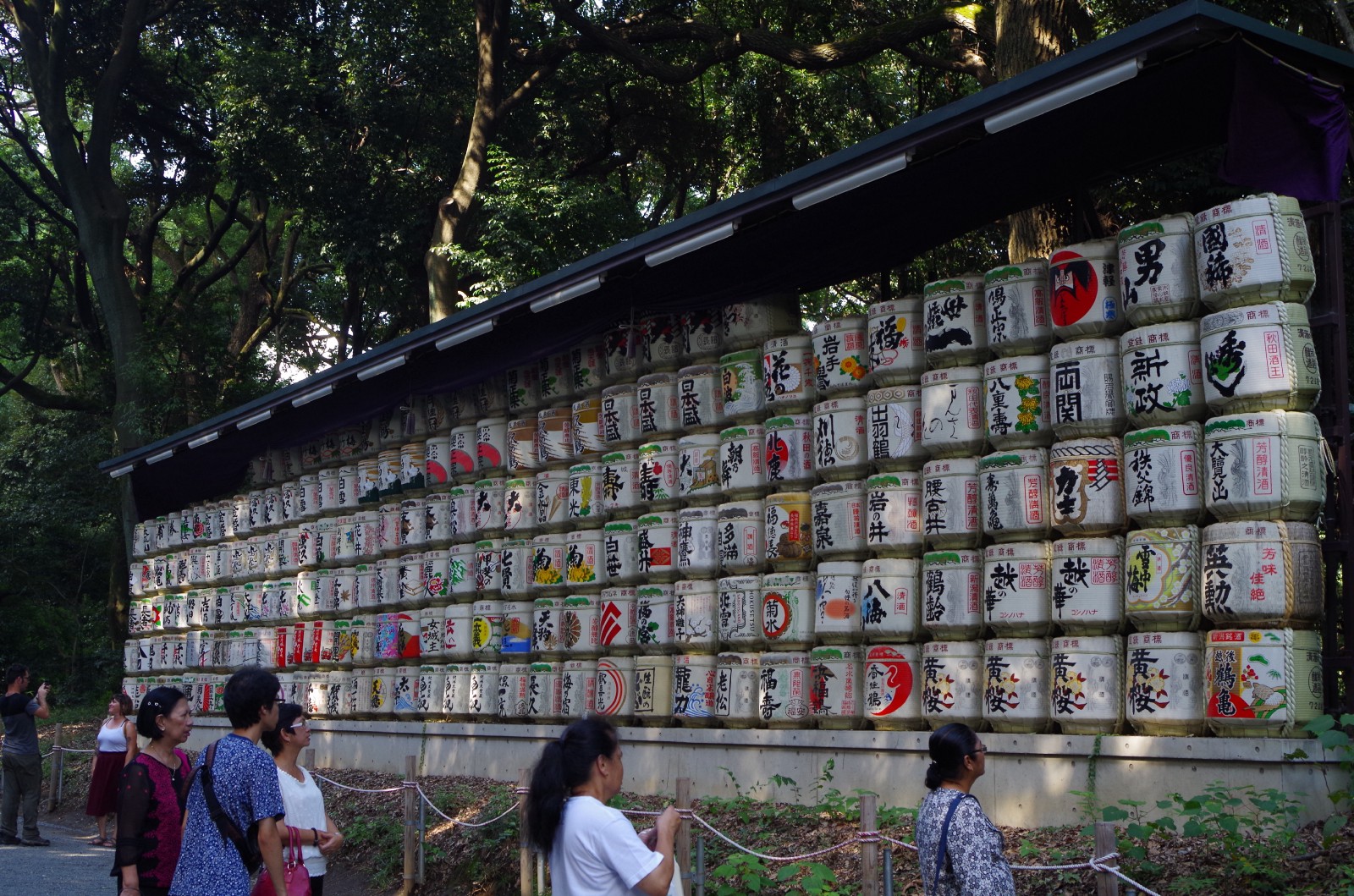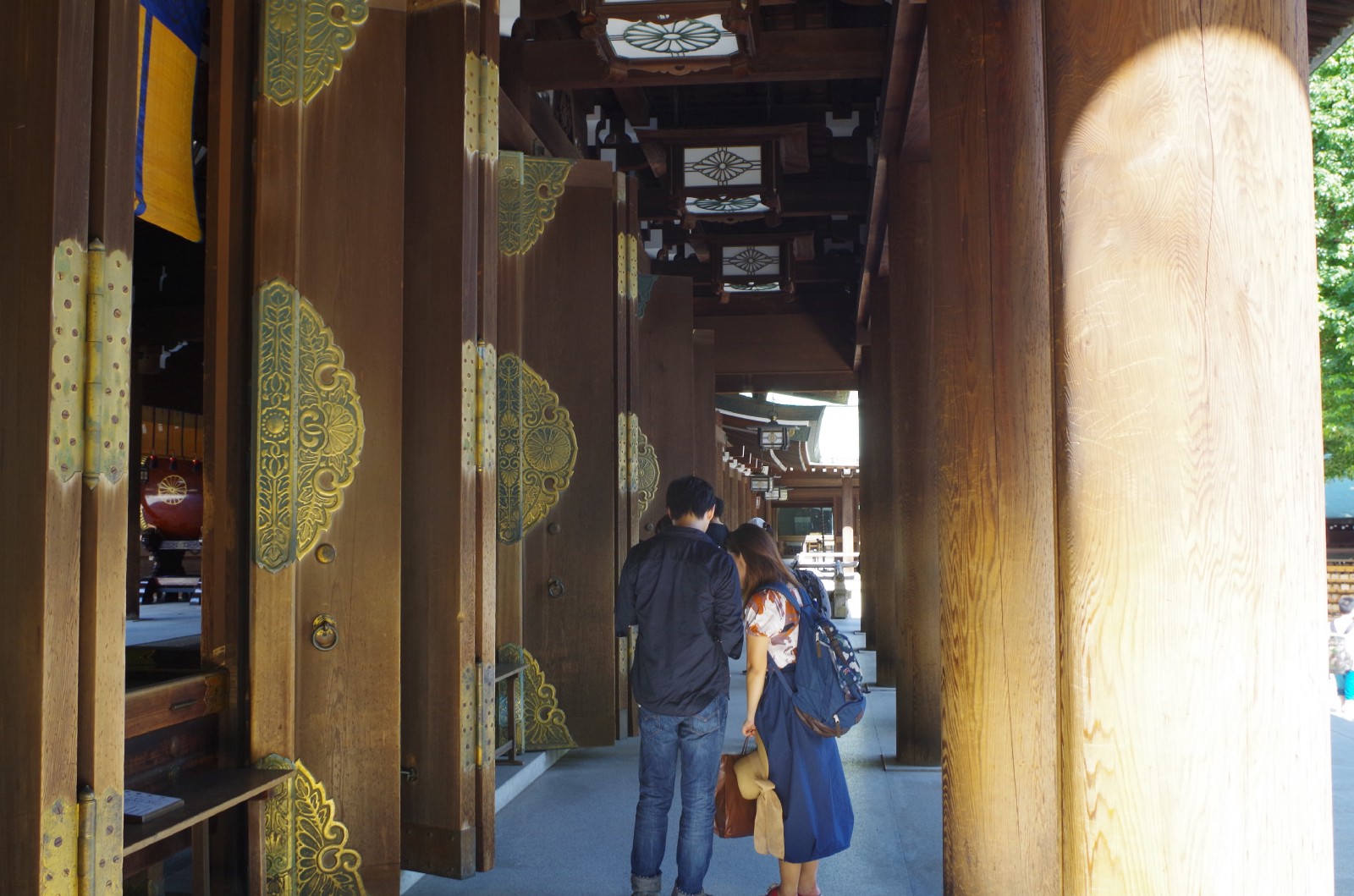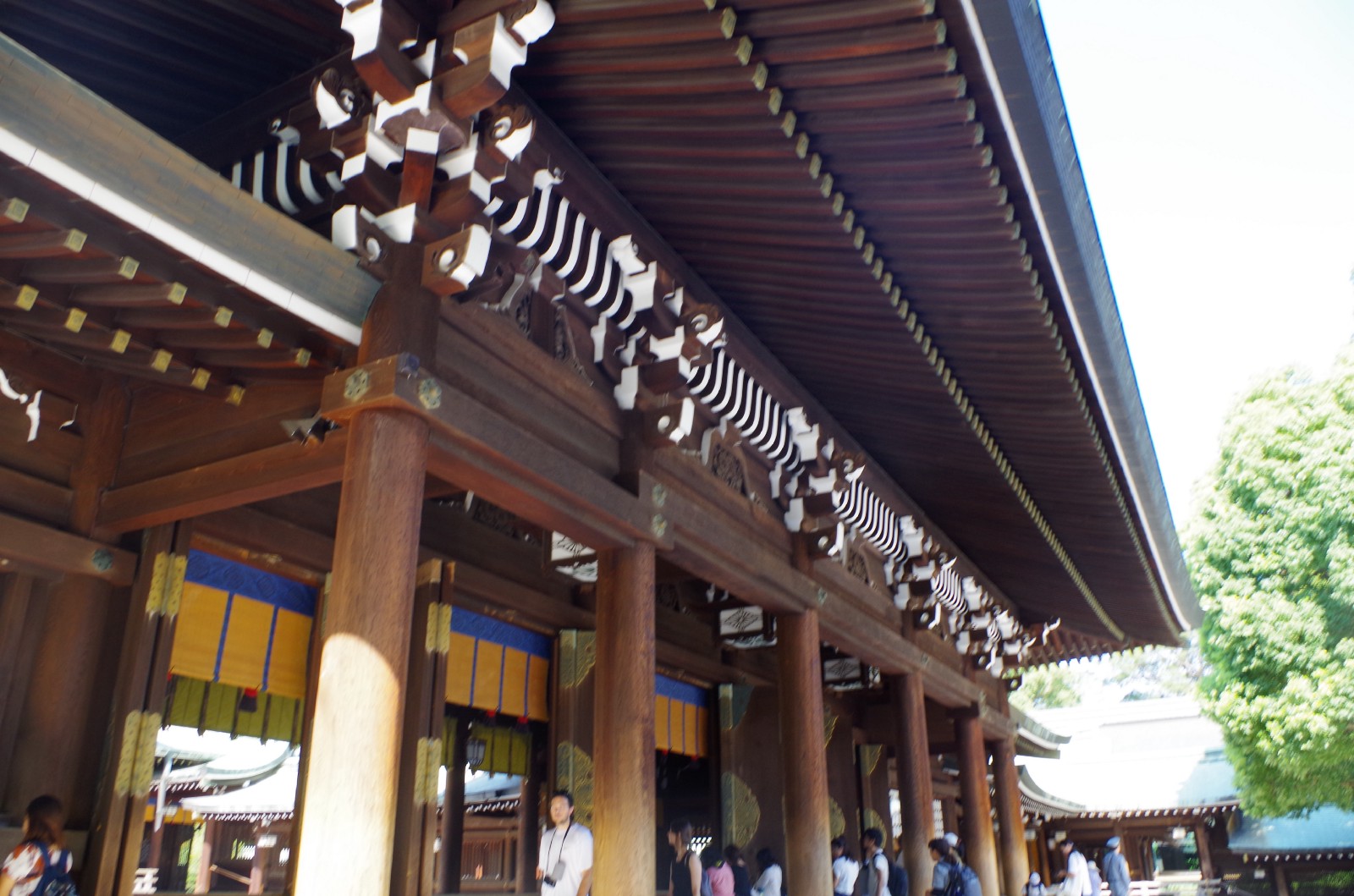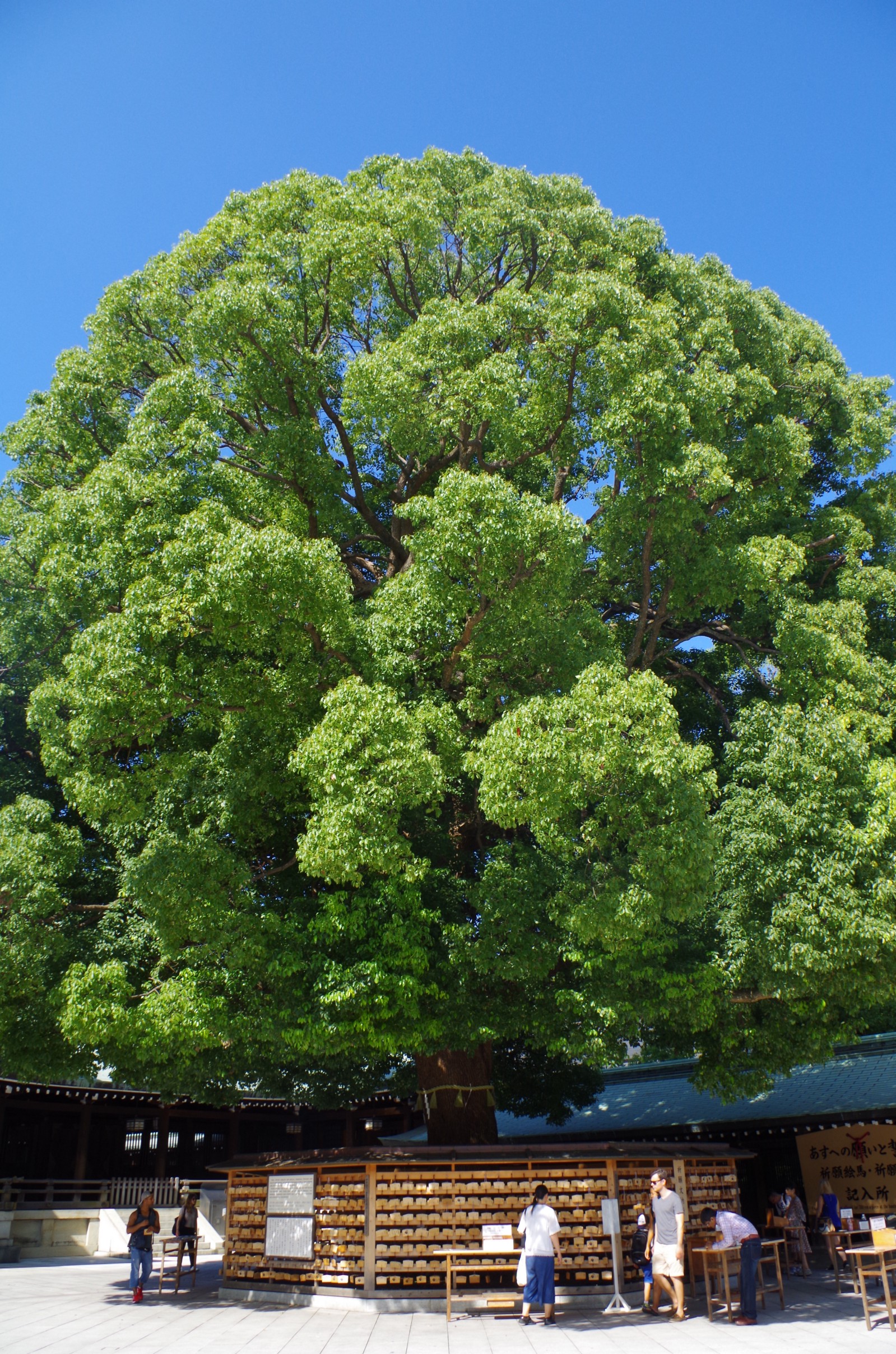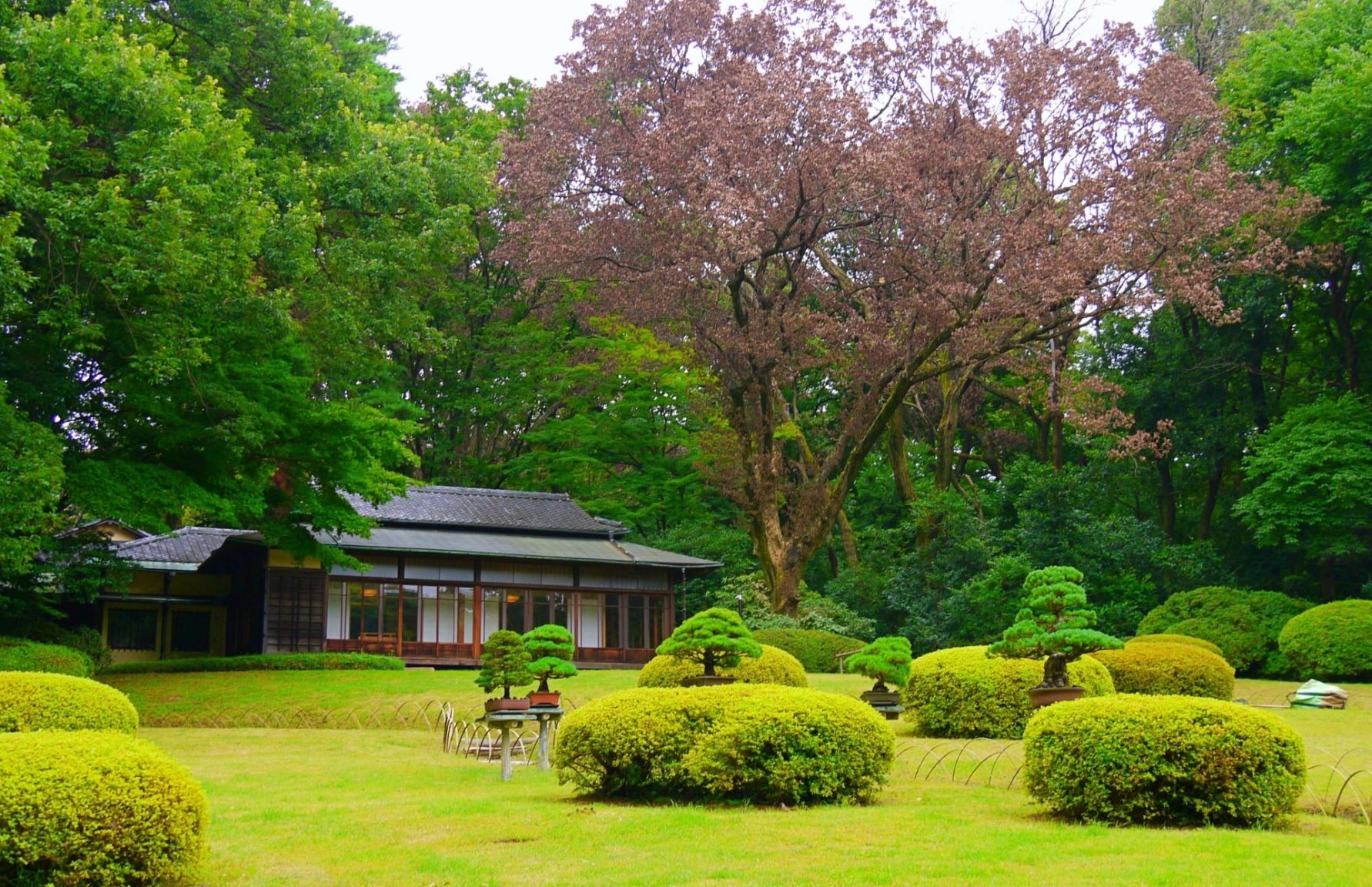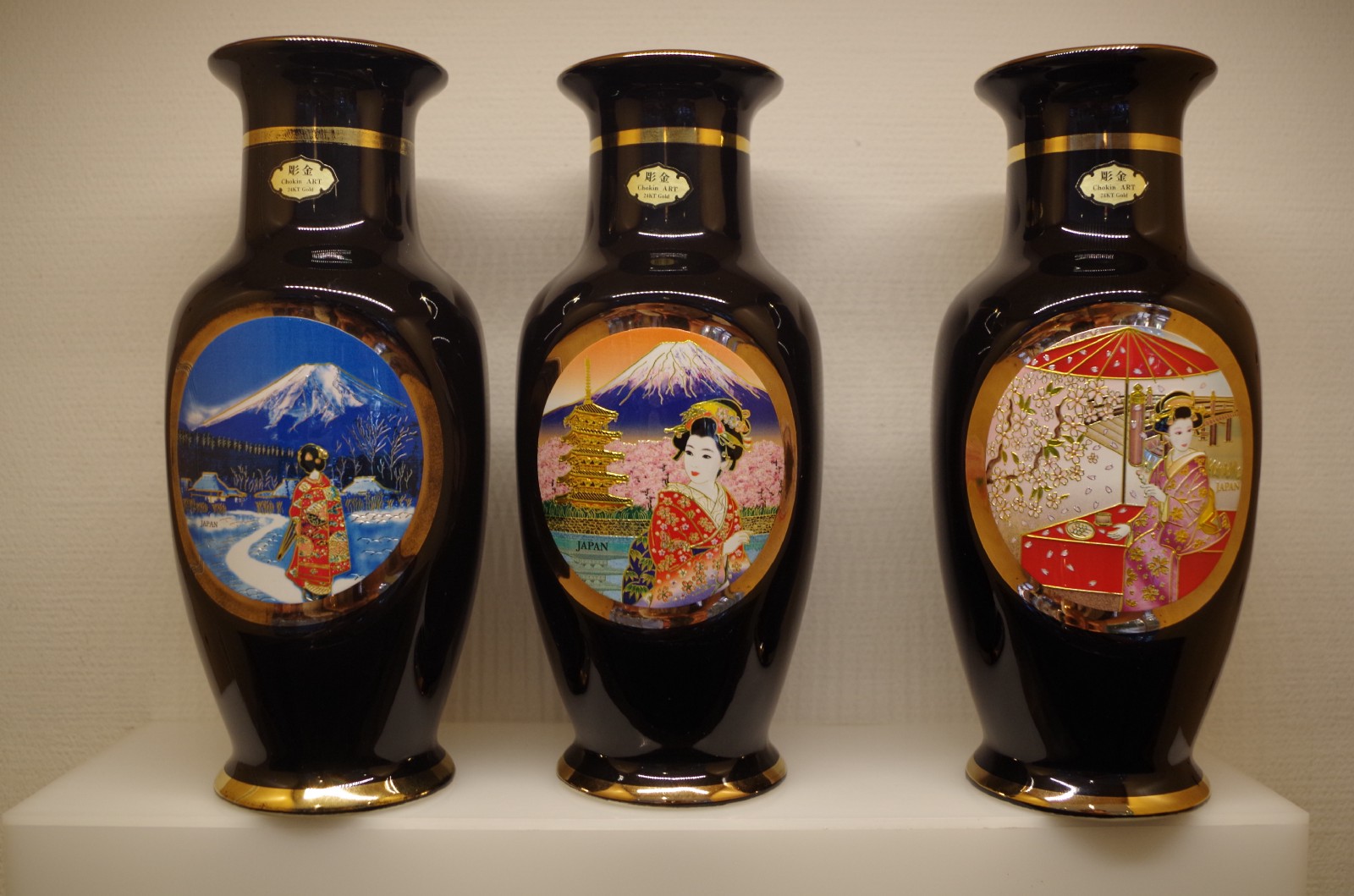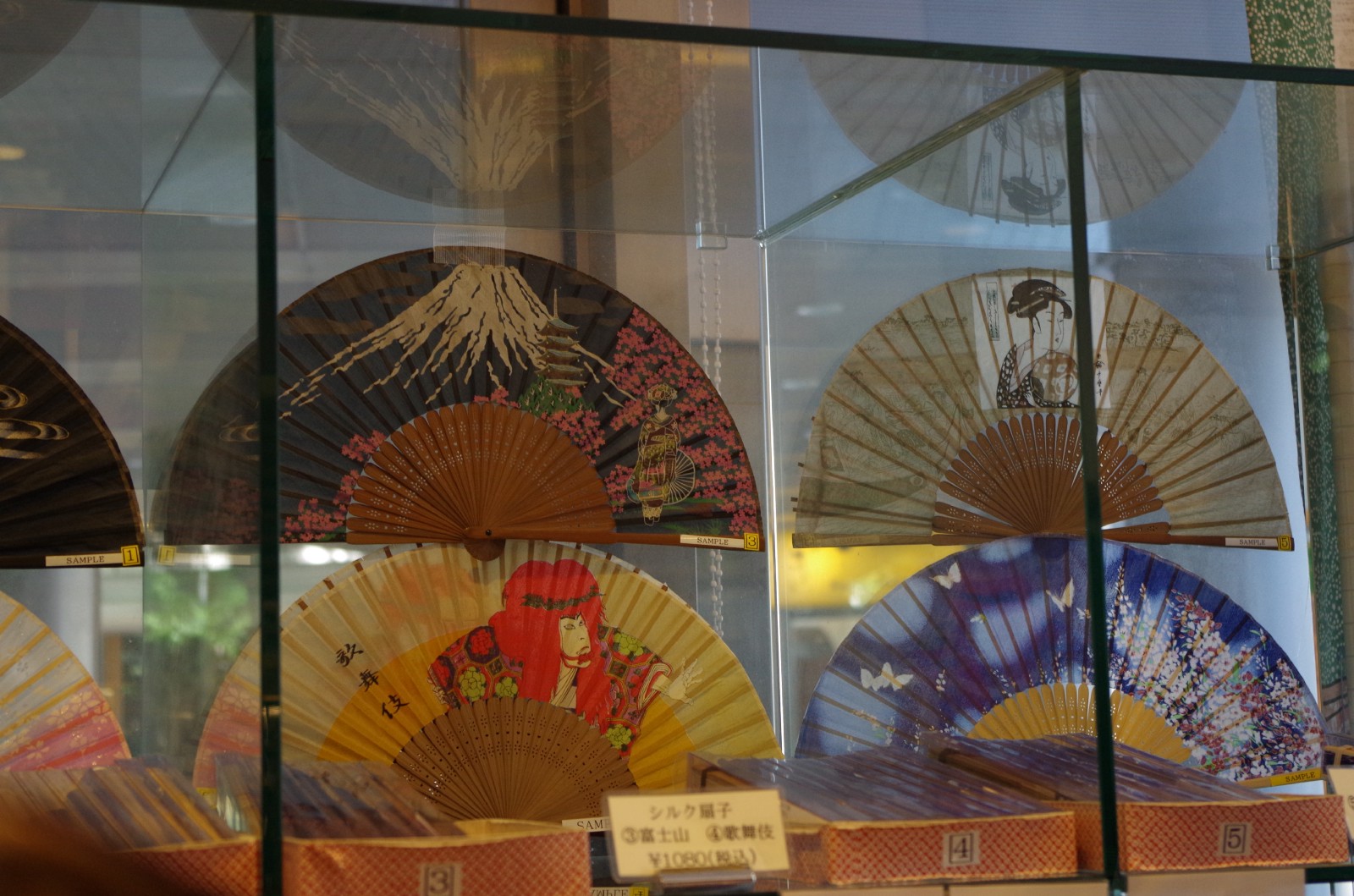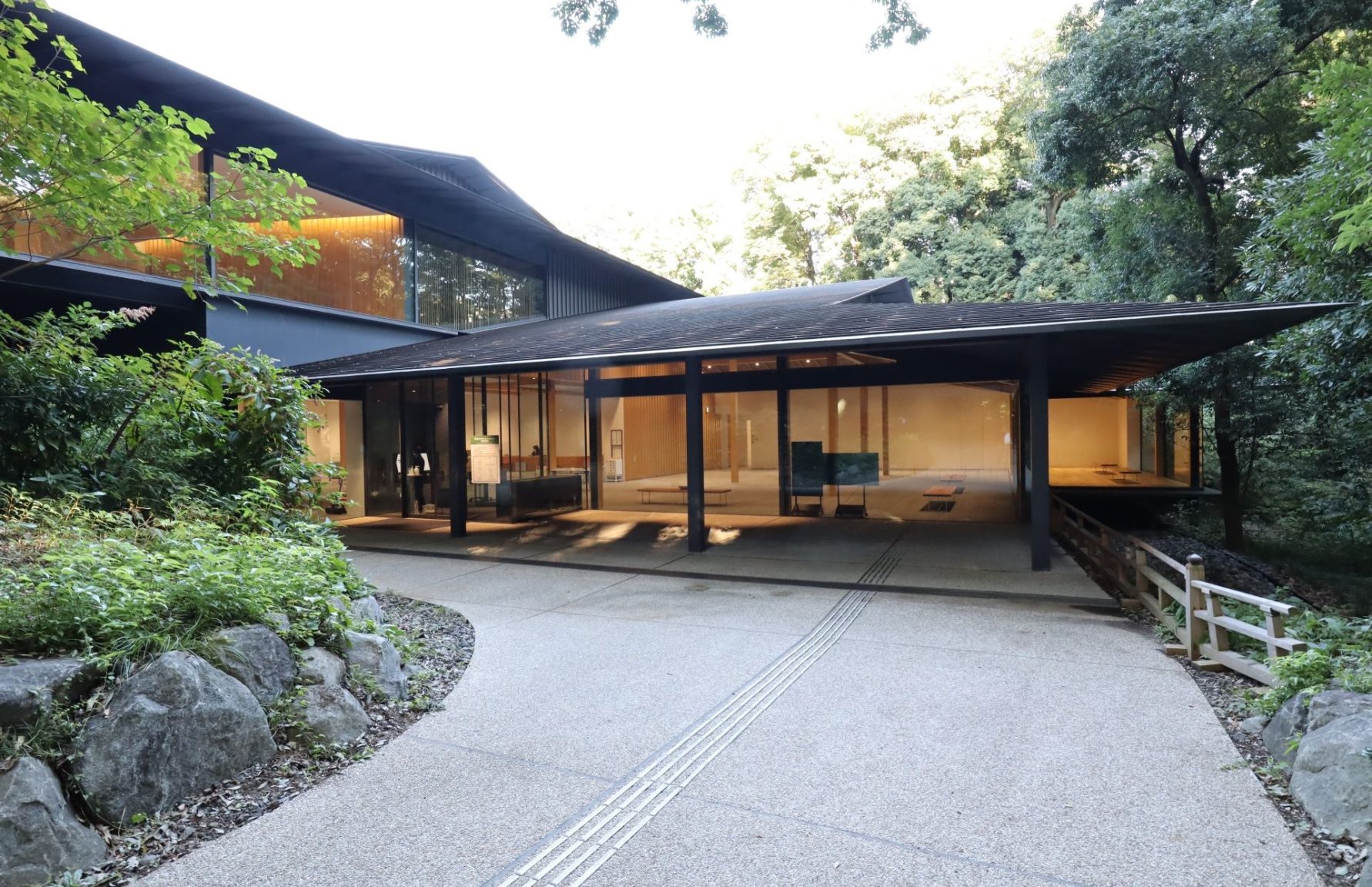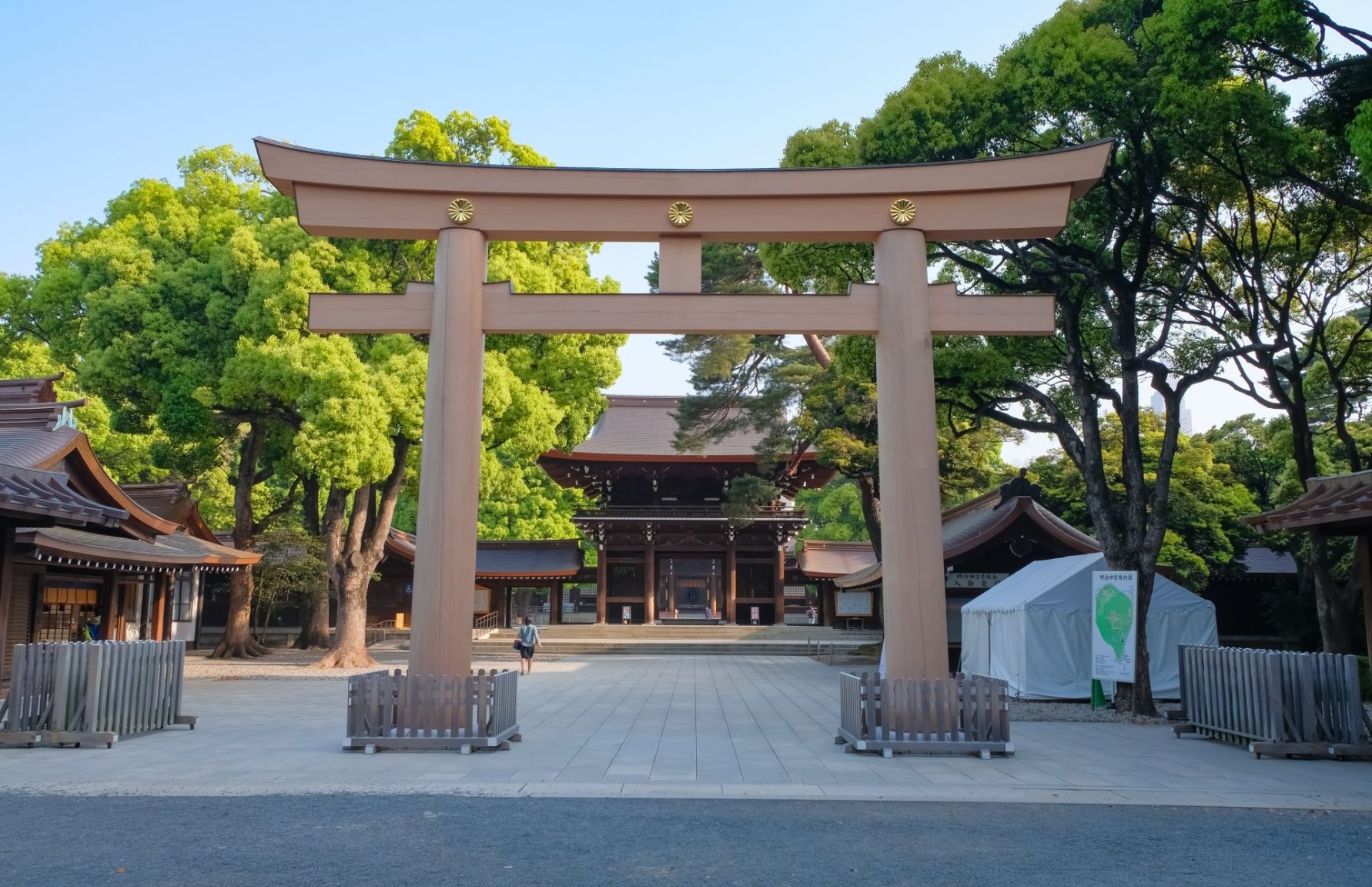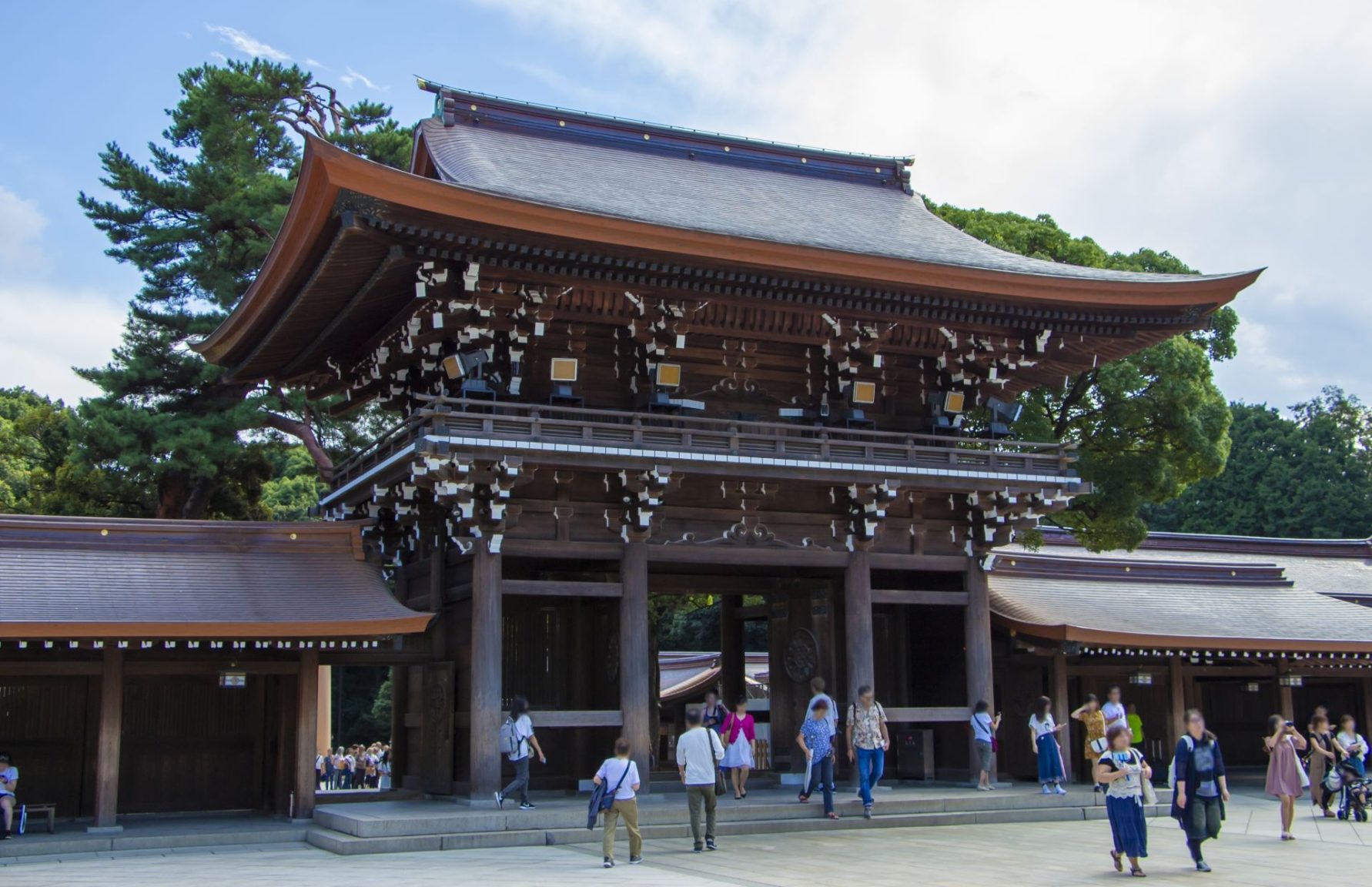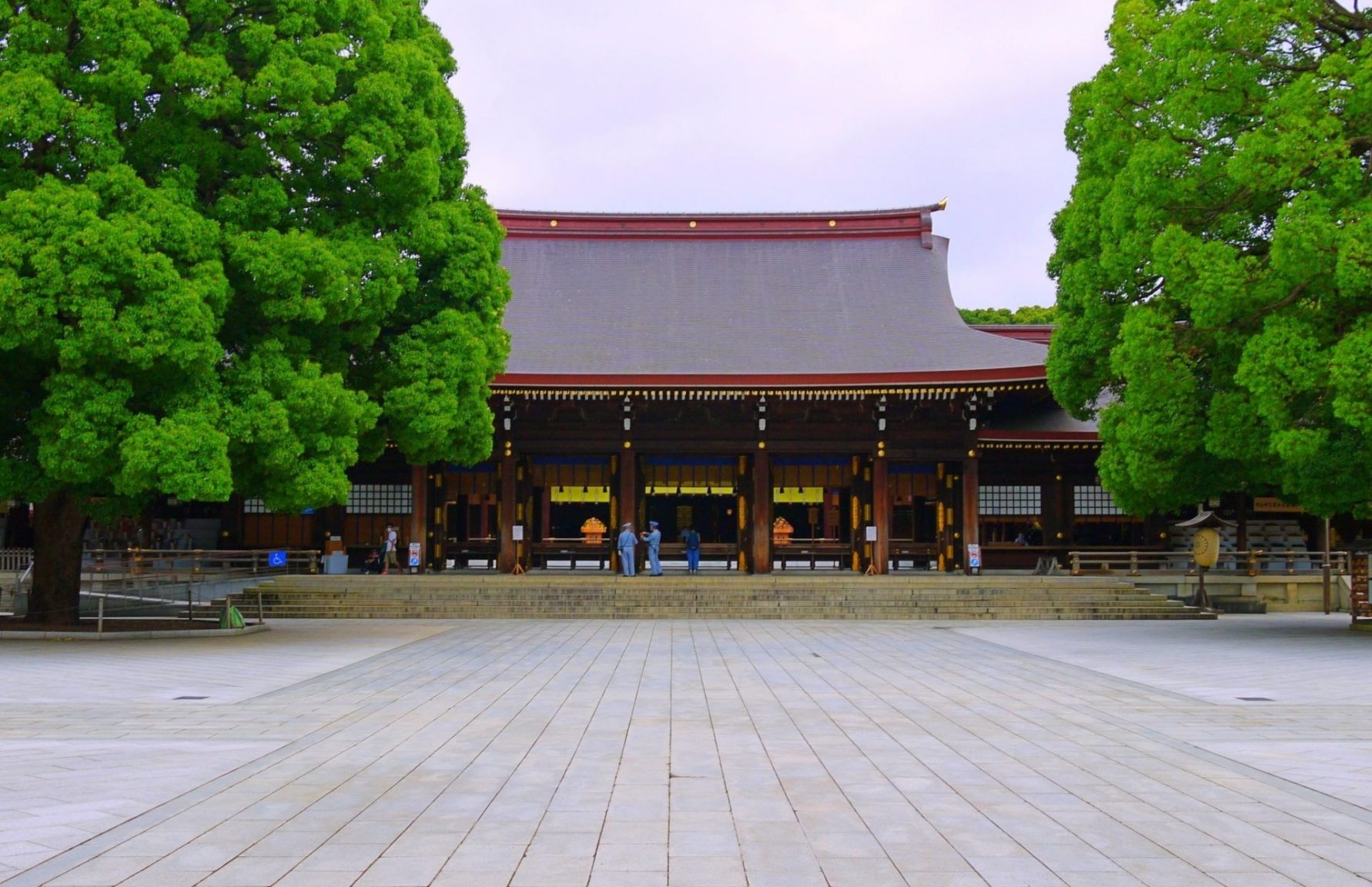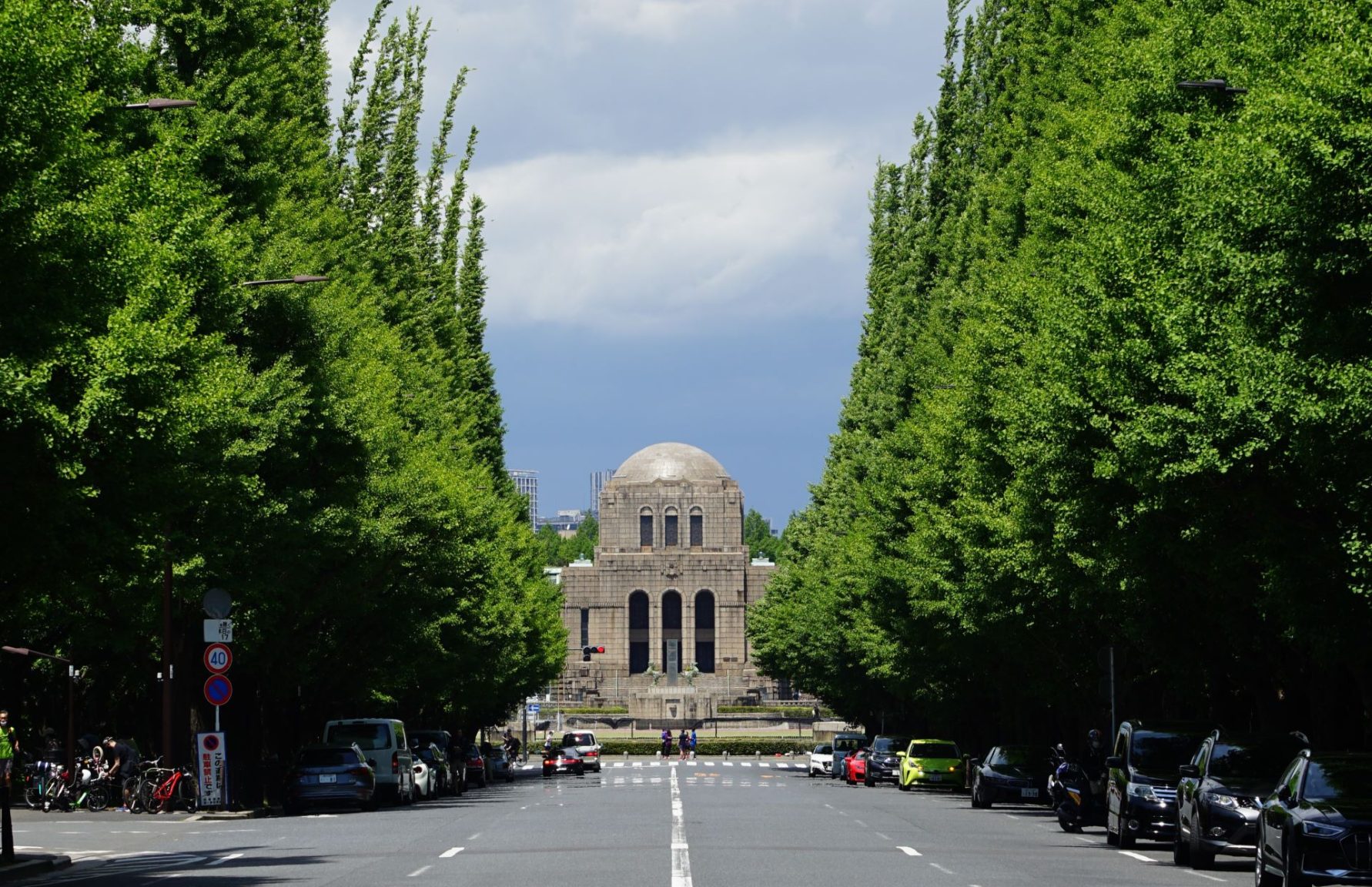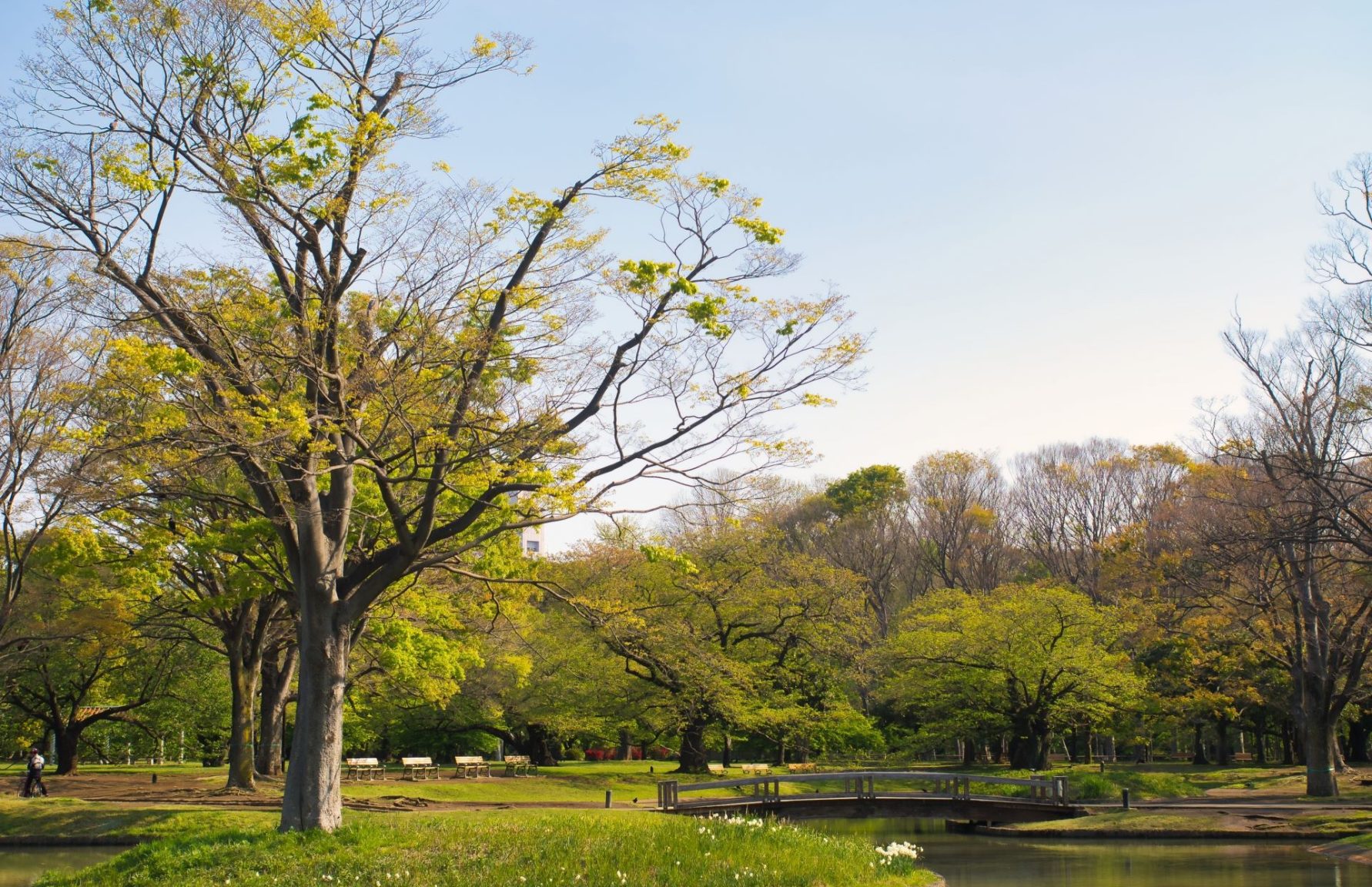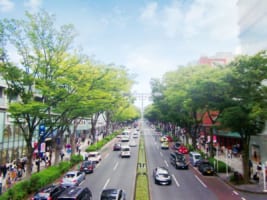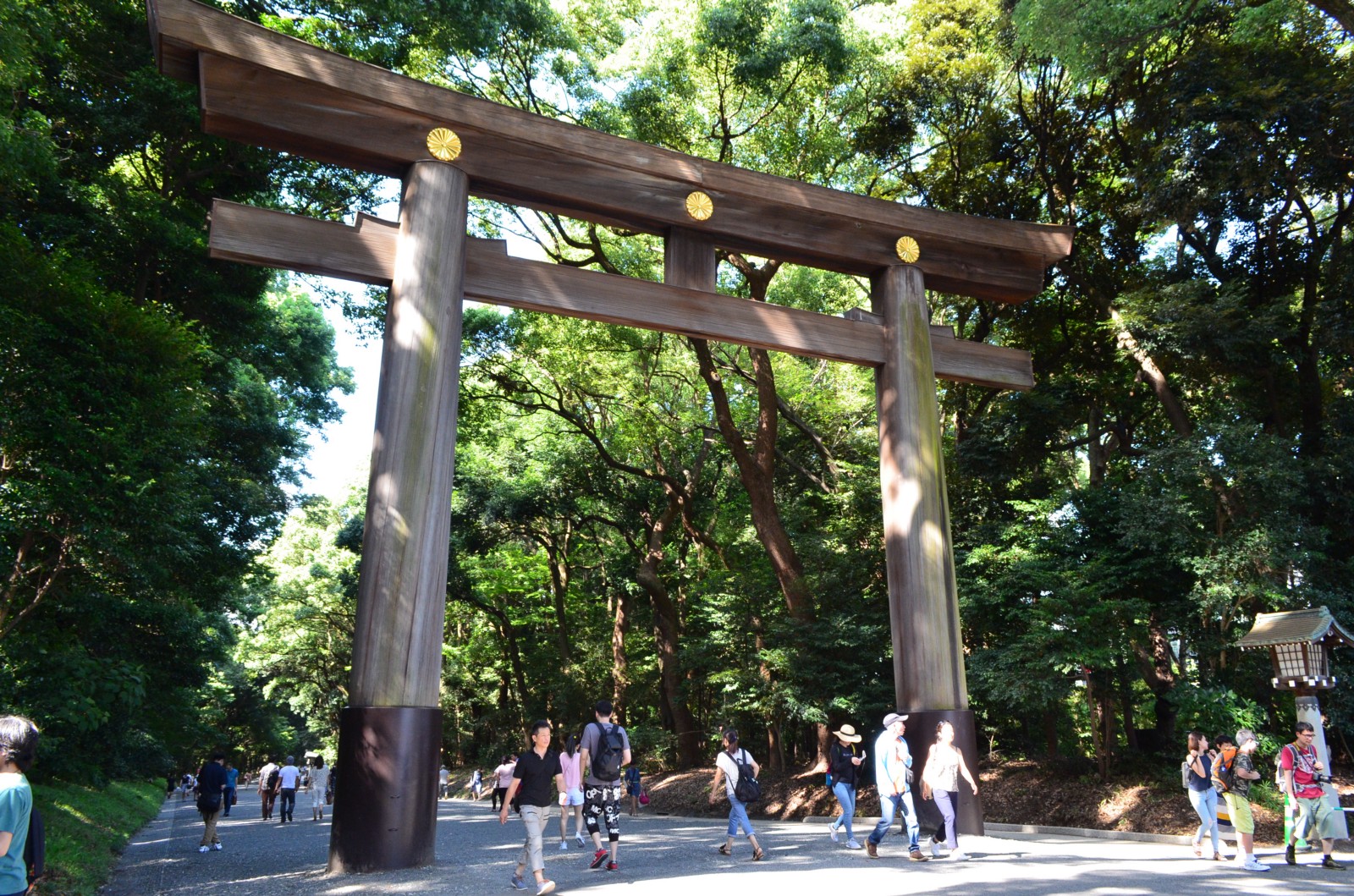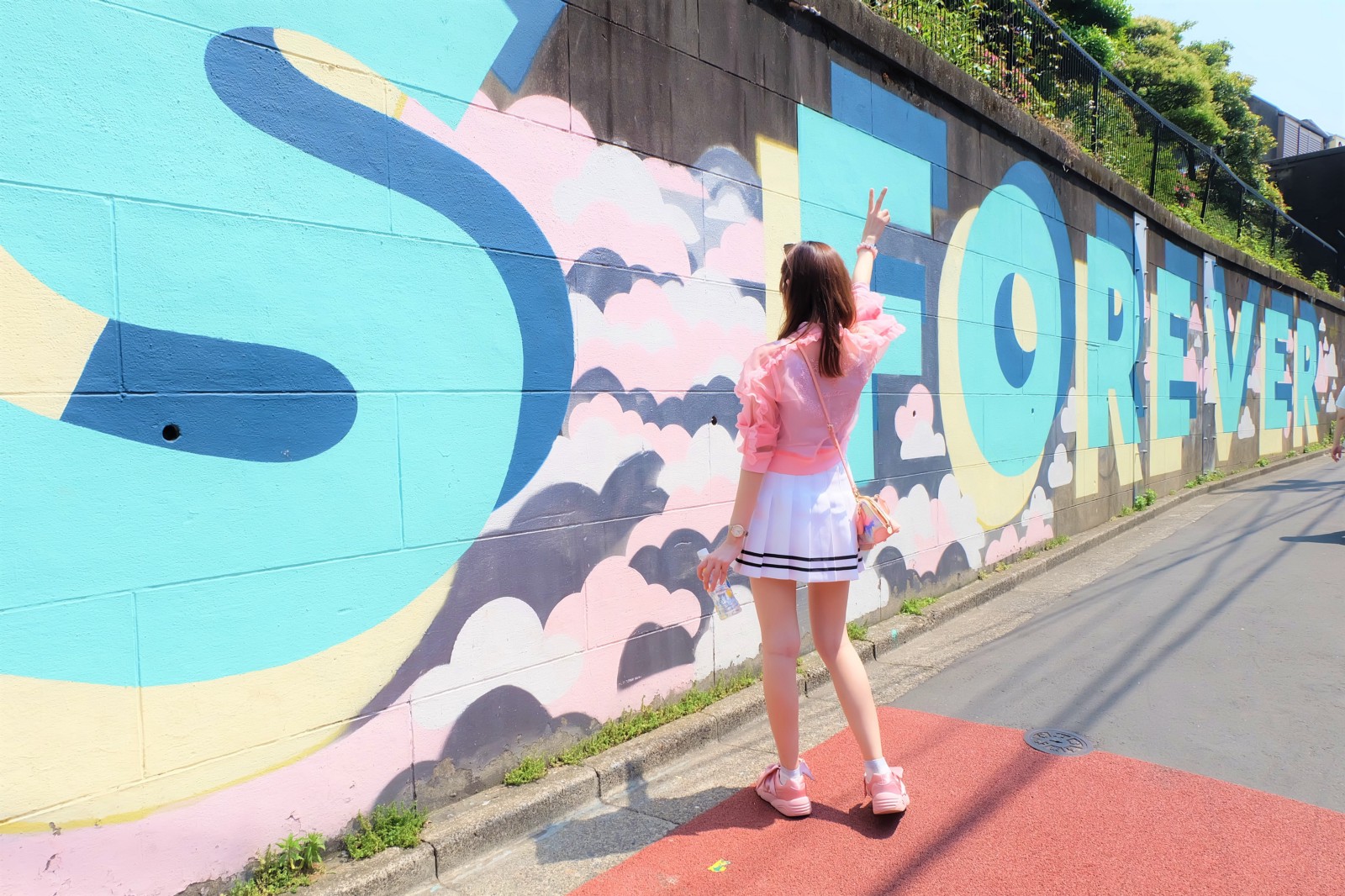Meiji Jingu: Most Popular Landmark in Harajuku
What to do at Meiji Shrine
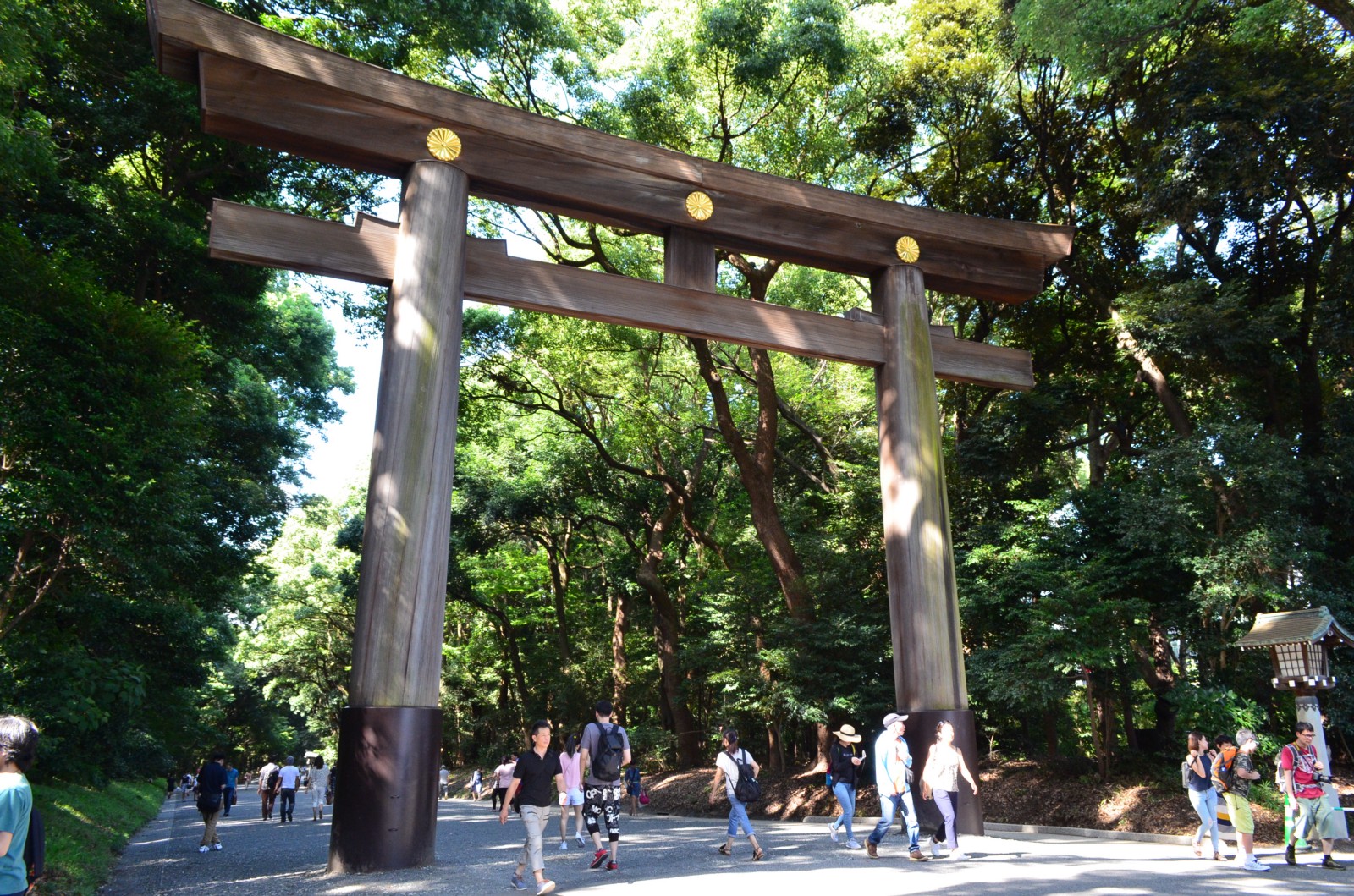
Harajuku is home to numerous tourist attractions, and one of the top sites to visit is Meiji Shrine. This guide will provide information on what to see at Meiji Shrine and how to get there.
Meiji Jingu (明治神宮), commonly known as Meiji Shrine, is one of the largest and most popular Shinto shrines in Tokyo. During the first few days of the New Year’s Holidays, millions of visitors come to Meiji Shrine to worship. This powerful shrine serves as a tranquil oasis amid the bustling towns of Harajuku and Shibuya, and it is conveniently located near Harajuku Station.
For a general overview of the Harajuku area, check out our All-in-One Guide to Harajuku!
*Please note that this article contains affiliate links.
What is Meiji Jingu (Meiji Shrine)
Meiji Jingu Shrine is one of Tokyo’s most revered Shinto landmarks, established in 1920 to honor Emperor Meiji and Empress Shoken. Tucked between the buzzing neighborhoods of Harajuku and Shibuya, and adjacent to the sprawling Yoyogi Park, the shrine sits inside a 70-hectare evergreen forest made up of more than 100,000 donated trees, planted by volunteers from Japan and abroad.
What draws millions of visitors annually is not just its spiritual calm or its symbolic architecture, but also its rare blend of imperial history, urban accessibility, and cultural depth. For both locals and travelers, it offers a moment of reflection amid Tokyo’s urban energy.
Historical and Cultural Significance

Meiji Jingu is dedicated to Japan’s 122nd emperor, Meiji, who reigned from 1867 to 1912, and his wife, Empress Shoken. He is remembered for steering Japan through the Meiji Restoration, a period that saw the country adopt Western technologies and institutions while strengthening national unity. Empress Shoken is noted for her advocacy of women’s education and social welfare during that transformative era.
In keeping with Shinto tradition, the shrine does not house physical remains but enshrines their deified spirits. Annual rituals and seasonal festivals take place here, including one of Japan’s most significant New Year’s visits (hatsumode), which attracts over 3 million people. Architecturally, the shrine is designed in the nagare-zukuri style, using Japanese cypress and copper roofs, reflecting both reverence for nature and traditional Shinto design principles.
Key Historical Facts
The original shrine was completed in 1920, eight years after the emperor’s death. Following wartime damage during the air raids of World War II, it was reconstructed in 1958, funded entirely through public donations, a gesture that underscored national respect and admiration.
Its 100,000-tree forest was not part of the natural landscape. Rather, it was a carefully planned project built through massive volunteer contributions. Today, this human-planted forest is a living monument to the balance between nature and spiritual devotion, a concept deeply rooted in Shinto beliefs.
What to do at Meiji Jingu (Meiji Shrine)
Torii gates
At each major entrance to Meiji Jingu, visitors pass under towering wooden torii gates, some of the largest in Japan. These gates, built from Japanese cypress, symbolize entry into a sacred realm. They’re a key photo stop, but also a place where bowing before passing through is considered respectful.
Approaches
Depending on where you arrive—JR Harajuku Station (South Gate), Yoyogi Station (North Gate), or Sangubashi Station (West Gate)—each approach offers a different walking route through the forested grounds. Along the paths, you’ll pass vibrant displays of sake barrels offered by brewers across Japan, and wine barrels donated from France, symbolizing the emperor’s openness to international culture.
Main Hall
At the main hall, visitors can observe or participate in traditional Shinto rituals. Purify your hands and mouth at the chozuya (water pavilion), bow twice, clap twice, make a wish, and bow once more. Check out how to worship at a Shinto shrine in Japan in this article.
Near the hall, ema (wooden votive tablets) are available for purchase—write your wishes and hang them alongside thousands of others. It is believed that the wishes on the tablet will come true.
Please be mindful of photography restrictions in the main sanctuary area, especially during ceremonies.
Inner Garden and Kiyomasa’s Well
The Meiji Jingu Gyoen (Inner Garden) is a quiet, landscaped retreat open for a small fee. It’s especially popular during iris season in June. Inside, you’ll find the Kakuuntei Tea House, which can only be seen from outside, and Kiyomasa’s Well, a centuries-old spring linked to a famed feudal lord. Often overlooked, it’s a quiet and peaceful corner within the shrine grounds.
Restaurant and Shop (Forest Terrace)
Forest Terrace, located near the shrine’s South Gate, includes Restaurant Yoyogi, a café, and a souvenir shop Mori. It’s an ideal stop to rest, enjoy Japanese-style meals, and pick up omiyage like incense, charms, or ema tablets.
Meiji Jingu Museum
Replacing the old Treasure Museum buildings, the Meiji Jingu Museum showcases personal belongings of Emperor Meiji and Empress Shoken, including formal clothing, art, and items used in state functions. The building itself is a modern work by renowned architect Kengo Kuma, blending natural materials with open space.
Proper Etiquette and Shrine Customs
Meiji Jingu may be a famed tourist destination, but we should not forget it is an active Shinto shrine visited daily by worshippers. Observing the proper etiquette is not just a matter of courtesy, but an essential part of the experience. Small actions carry meaning, like how you walk through the torii gate or how you stand at the offering hall. This section walks you through the core customs so you can visit with confidence and respect.
Step-by-Step Etiquette Guide

Bow Before the Torii Gate
Before stepping under the torii gate, pause slightly to the side and give a slight bow. This gesture signals your entry into sacred ground.
How to Use the Temizuya (Purification Fountain)
- At the temizuya, rinse your hands and mouth in a specific order using the ladle provided.
- Take the ladle in your right hand and pour water over your left hand.
- Switch hands and pour water over your right hand.
- Pour water into your left hand and use it to rinse your mouth (don’t touch the ladle to your lips).
- Rinse your left hand again.
- Tip the ladle vertically to rinse the handle before placing it back.
Praying at the Main Shrine
At the offering hall:
- Throw a coin (typically ¥5 or ¥10) into the offering box.
- Bow deeply twice.
- Clap your hands twice.
- Silently make a wish or prayer.
- Bow once more.
- Avoid standing too long at the front if others are waiting, especially during busy times.
Behavior Tips for Respectful Tourism
Quiet Conduct
Loud conversations and phone use are discouraged anywhere within the shrine grounds. Turn phones to silent mode and step aside if you need to take a call—ideally outside the main shrine precincts.
Dress Code
There’s no strict dress requirement, but visitors are expected to dress modestly, especially if entering shrine buildings or attending ceremonies. Swimwear, bare shoulders, or revealing clothing are inappropriate.
Pathway Awareness
Avoid walking in the exact center of the main path leading through torii gates and toward the shrine buildings. In Shinto belief, the center is the path reserved for the gods (kami). Keep to the left or right side instead.
Best Times to Visit and What to Avoid
Timing your visit can make a big difference in your experience, whether you’re seeking a peaceful forest walk or want to witness traditional ceremonies. Below is a detailed look at seasons, events, and insider tips to help you avoid the most crowded times.
Seasonal Highlights
- New Year’s visit (hatsumode): Over 3 million visitors arrive during the first three days of January, making it Japan’s busiest shrine for hatsumode.
- Cherry blossoms (late March–early April): Blossoms peak around early April. Note that Meiji Jingu’s sakura are fewer than nearby Yoyogi Park, but the shrine is still attractive at peak bloom.
- Fall foliage (late November–early December): The shrine’s forested paths display autumn colors with fewer tourists and mild weather.
Event Calendar and Crowd Forecast
Below is a forecast table summarizing major crowded periods at Meiji Jingu Shrine:
| Event / Period | Dates | Crowd Level | Notes |
|---|---|---|---|
| Hatsumode (New Year) | Jan 1–3 | 🔴 Very High (3M+) | Expect 2–3 hr queues; best arrival by 9:30 AM or earlier |
| Golden Week & Spring Festival | Late Apr–Early May | 🔴 High | Includes Meiji Jingu Spring Grand Festival (May 2–3) |
| Cherry Blossom Viewing | Late Mar–Early Apr | 🟠 High | Early mornings better; crowds peak around bloom dates |
| Autumn Foliage | Late Nov–Early Dec | 🟡 Medium | Pleasant weather, manageable crowds |
| Weekends (Year-round) | Saturdays & Sundays | 🔴 Medium–High | Always busier on weekends; best to visit on weekdays |
Tips to Avoid the Rush
-
Weekdays are your best bet: Visiting Tuesday–Thursday reduces congestion significantly.
-
Stick to early mornings: Before 10 AM is ideal, especially during hatsumode and spring bloom.
-
Skip weekends in event-rich seasons: Particularly during autumn foliage and spring cherry blossoms, weekends amplify crowds.
-
Avoid grouped tour slots: Most large tour buses arrive midday—aim for early or later slots to minimize overlap.
How to Get to Meiji Jingu (Meiji Shrine)
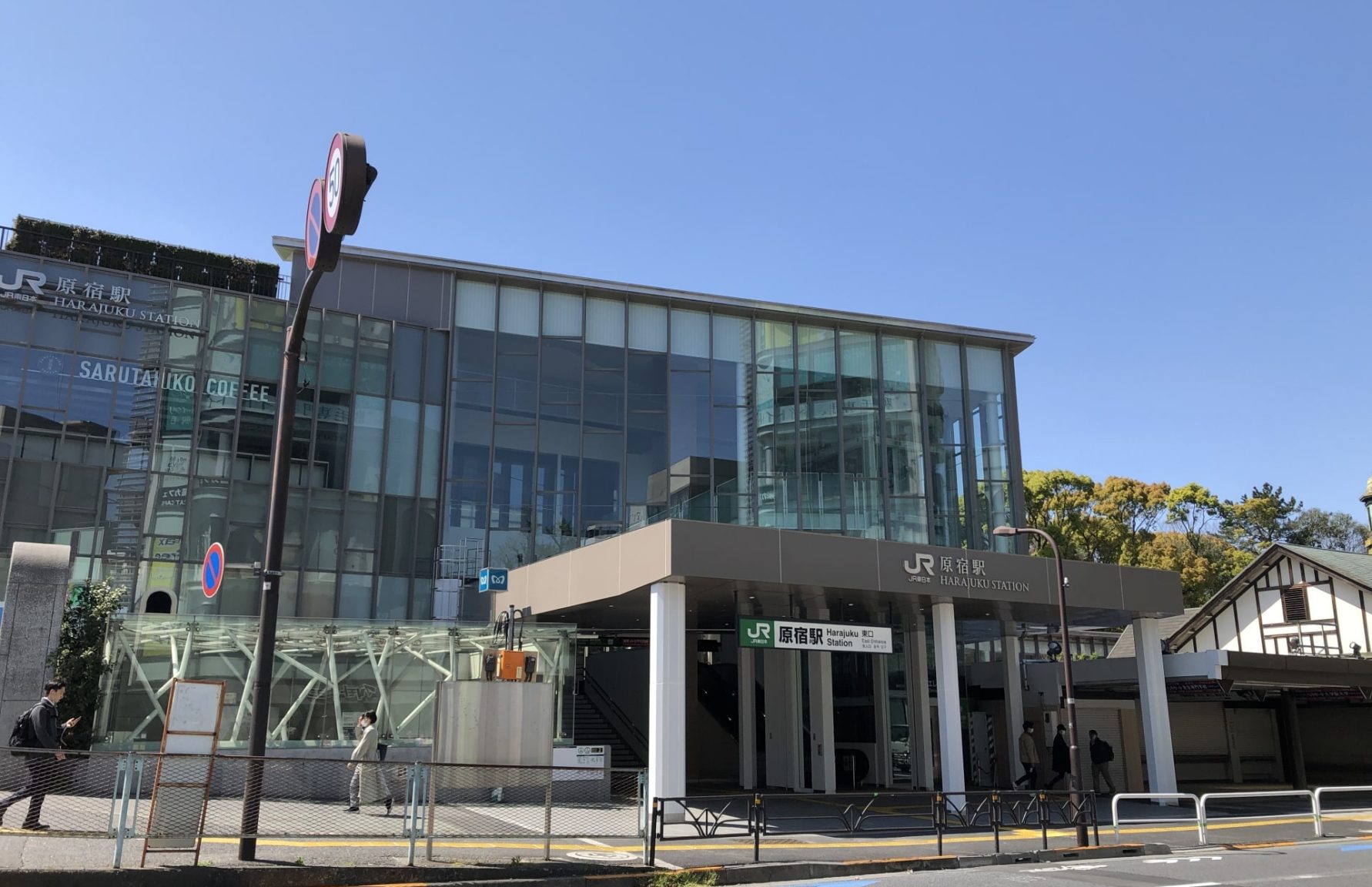
Map
Access
You can access Meiji Shrine from three stations: an 11-minute walk from Harajuku Station (原宿駅), a 15-minute walk from Yoyogi Station (代々木駅), and an 11-minute walk from Sangubashi Station (参宮橋駅). It is recommended for first-timers to get from Harajuku Station of the JR Yamanote Line since the green line is very useful and stops at popular tourist stations besides Harajuku, such as Tokyo, Shibuya, Shinjuku, Akihabara, Ueno, etc.
Address
1-1 Yoyogikamizonocho, Shibuya, Tokyo 151-8557
Business Hours
Opening and closing times change every month according to sunrise and sunset times:
6:40–16:20 (January)/6:20–16:50 (February)/5:40–17:20 (March)/5:10–17:50 (April)/5:00–18:10 (May)/5:00–18:30 (June)/5:00–18:20 (July)/5:00–18:00 (August)/5:20–17:20 (September)/5:40–16:40 (October)/6:10–16:10 (November)/6:40–16:00 (December)
Price
Free
Official Website
Looking to visit Meiji Shrine straight from the airport or your hotel? Enjoy a seamless journey with Airport Taxi, the top choice for transfers to and from Narita and Haneda Airport!
Coupon Code: JWM2023
Tourist Reviews of Meiji Jingu
Meiji Jingu, one of Tokyo’s most iconic Shinto shrines, is celebrated not only for its historical significance but also for the serene natural surroundings that captivate visitors. With a stellar Google rating of 4.6 (based on 39,596 reviews), a TripAdvisor score of 4.5 (ranked #2 of 351 things to do in Shibuya), and a Yelp rating of 4.5 (162 reviews), it consistently garners high praise from tourists.
On TripAdvisor, one visitor highlighted how having a local guide enriched their experience:
We visited with a local guide which helped give it context. The grounds are beautiful and rich with culture as the guide explained as we walked through. I would highly recommend a visit and learn about the customs at the gates, along the walkways and at the temple.
―from TripAdvisor
Meanwhile, a Yelp reviewer reflected on their nostalgic visit to the shrine:
This was not my first time visiting the Meiji Jingu Shrine because I had been there when I was little. After we shopped at Takeshita Street in Harajuku then we walked to Meiji Jingu. It was a wonderful experience and I like the shrine’s traditional architecture. It was a beautiful, peaceful walk to the Meiji Shrine even though it was a little exhausting due to the hot weather.
―from Yelp
These reviews reflect the shrine’s unique ability to combine cultural immersion with tranquility, offering an escape from Tokyo’s bustling energy.
Tourist Attractions Near Meiji Jingu
Because of its central location, Meiji Jingu Shrine is a perfect centerpiece for a Harajuku & Shibuya day tour, adding a dash of spiritual heritage with youth culture, greenery, and hidden gems.
1. Take a Stroll in Meiji Jingu Gaien and Meiji Memorial Museum
While not as close as the name would suggest, Meiji Jingu Gaien (Meiji Shrine Outer Garden), designed in a Western style, is a worthwhile stop. In spring, around 400 cherry trees bloom here; in autumn, a 300‑meter ginkgo tree avenue forms a golden tunnel, especially breathtaking during the evening illumination at the annual Ginkgo Festival. Within the grounds lies the Meiji Memorial Museum, built in 1926 as an Important Cultural Property. It displays eighty large paintings depicting Emperor Meiji’s life, offering both historical insight and a calm gallery space.
 Access Access |
25-min walk from Meiji Jingu |
|---|
2. Shop Around Harajuku’s Takeshita Street
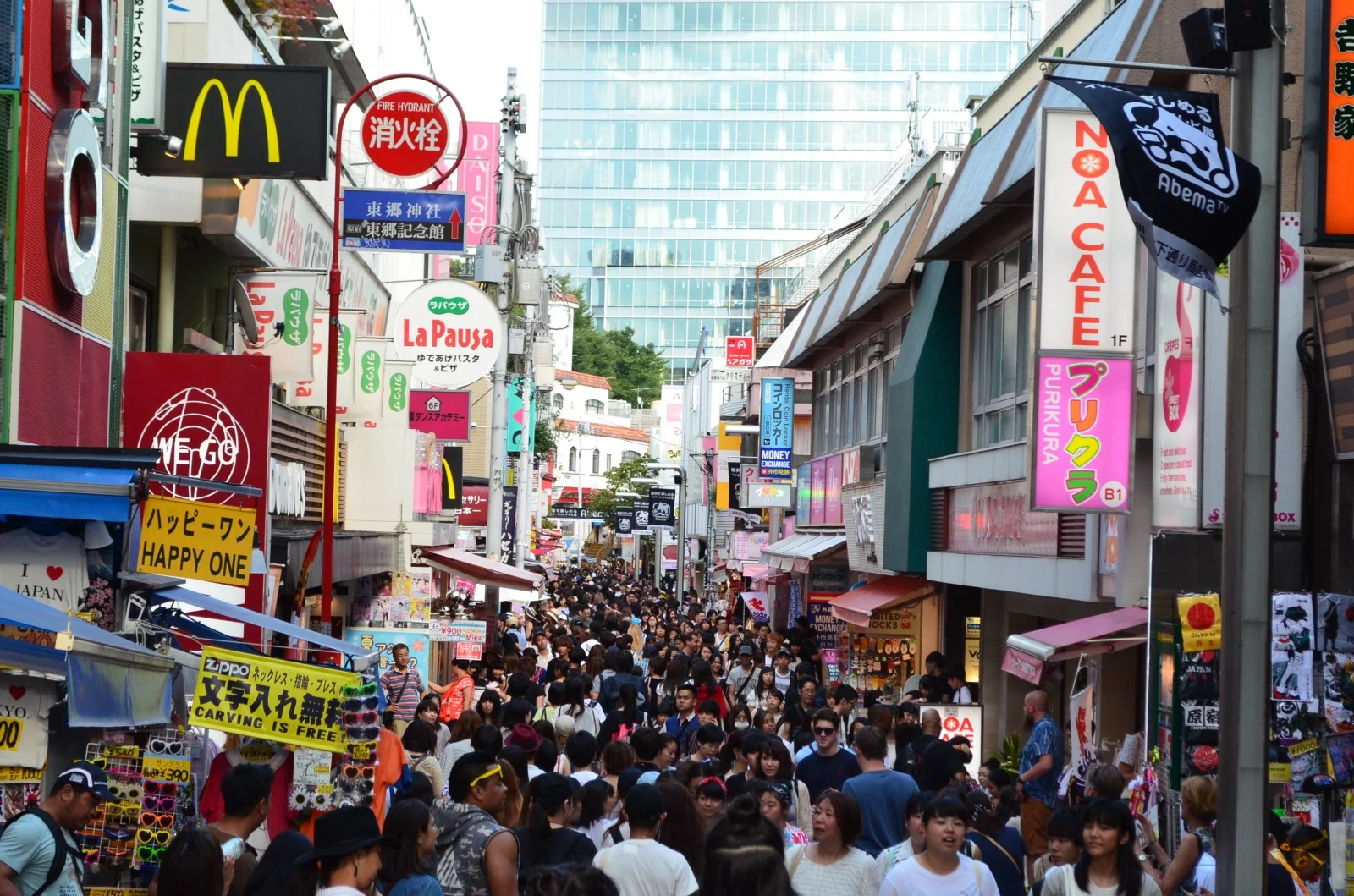
Takeshita Dori, just outside Harajuku Station, is Tokyo’s epicenter of quirky fashion and street snacks. Expect colorful storefronts, long queues for crepes, and pockets of cosplayers and mini-events. Weekday mornings are calmer, offering a better experience than the frenetic weekend crowds
More info: Takeshita Street Harajuku: Best Things to Do
3. Relax in Yoyogi Park
Across the shrine’s north exit lies Yoyogi Park, a green expanse ideal for relaxation or people‑watching. It draws joggers, families, and performing groups, like the popular rockabilly dancers on Sundays. Visitors often picnic beneath cherry blossoms in early spring—about 800 sakura trees—while summer brings bike renters and weekend festivals. Popular opinions suggest taking mosquito precautions in warmer months if planning an evening picnic .
More info: Yoyogi Park: Enjoy the Beautiful Nature in Tokyo!
4. Discover Trendy Cafes and Shops in Omotesando
The long shopping street Omotesando Street, which was made as the outer approach to Meiji Shrine in 1919, is also one of the best places to visit near the shrine. Cool clothing stores and trendy food stores are lined up along the street.
5. Beyond Meiji Jingu: Harajuku’s Other Shrines and Temples
Many visitors don’t realize that Harajuku has more shrines and temples beyond Meiji Jingu. If you want to balance Harajuku’s pop culture with a sense of history, add Togo Shrine and Chosenji Temple to your walk. For a full list of shrines and temples in Harajuku, see this guide:
More info: Essential Shrines and Temples to Visit in Harajuku
Frequently Asked Questions Regarding Meiji Jingu Shrine
What should I wear to visit a shrine?
Dress smart-casual and modest with clean, neat clothes. Avoid overly casual items like booty shorts or workout gear. No strict dress code, but respectful attire helps you blend in.
Can I bring kids or a stroller?
Children and strollers are welcome, but be aware of the reality of Japanese transit: not all stations have elevators. Consider a lightweight, umbrella stroller or baby carrier. Inside spaces like the Meiji Jingu Museum may prohibit strollers—you’ll need to park them outside or use a carrier.
Are there English signs or guides available?
Most major pathways, maps, and information boards at Meiji Jingu offer English translations. Staff can provide basic guidance. English audio guides or staffed tours are occasionally available, especially during festivals—check the official site or onsite signage for availability.
Etiquette around photos, talking, and offerings
Photography is allowed in most areas, except within the main sanctuary during prayers or ceremonies. Keep voices low and phones quiet. Avoid walking in the center of paths under torii gates—this is the kami’s way.
For offerings: tossing a coin (¥5 is considered lucky) into the box, ringing the bell (if available), then following the two-bow, two-clap, one-bow sequence is customary, but simple reverence is always respected
Meiji Jingu Shrine offers far more than a photo stop between Harajuku crepes and Shibuya crossings. It’s a place where quiet ritual meets forest stillness, and where even first-time visitors can feel a cultural rhythm that’s distinctly Japanese.
For more info about Harajuku and Shibuya, check out these articles below, too!
Written by
Hi! I’m a writer and editor at Japan Web Magazine. Since 2017, I’ve written over 500 articles covering a wide range of Japan-related topics—must-visit travel spots, local food culture, helpful travel tips, seasonal events, anime, manga, and more. I travel all over Japan, from the snowy landscapes of Hokkaido to the tropical beaches of Okinawa. My hobbies, such as hunting for the best ramen shops and keeping up with the latest anime every season, help me share the magic of Japan with people from all over the world. Whether you’re a first-time visitor or a Japan fan planning your dream trip, I want to help you experience the best of what this country has to offer. After traveling to many countries around the world, I still love Japan the most, and I continue to share information while making the most of my perspective as someone who was born and raised here. [Connect with me] ▷You can find more of my writing and follow my latest thoughts on Japan over on Medium. A bit more about me: [Traveler at heart] ▷Most unforgettable trip: Chichijima Island, a remote island that takes over 23 hours to reach by ferry from Tokyo! ▷Favorite neighborhood in Tokyo: Kichijoji [Foodie life] ▷Obsessed with sushi and ramen ▷Proud foodie moment: Scored a seat at the legendary Sukiyabashi Jiro [Passionate otaku] ▷Favorite anime: March Comes in Like a Lion and Attack on Titan ▷My Best Anime ▷Manga I live by: One Piece and Slam Dunk ▷My Best Manga





